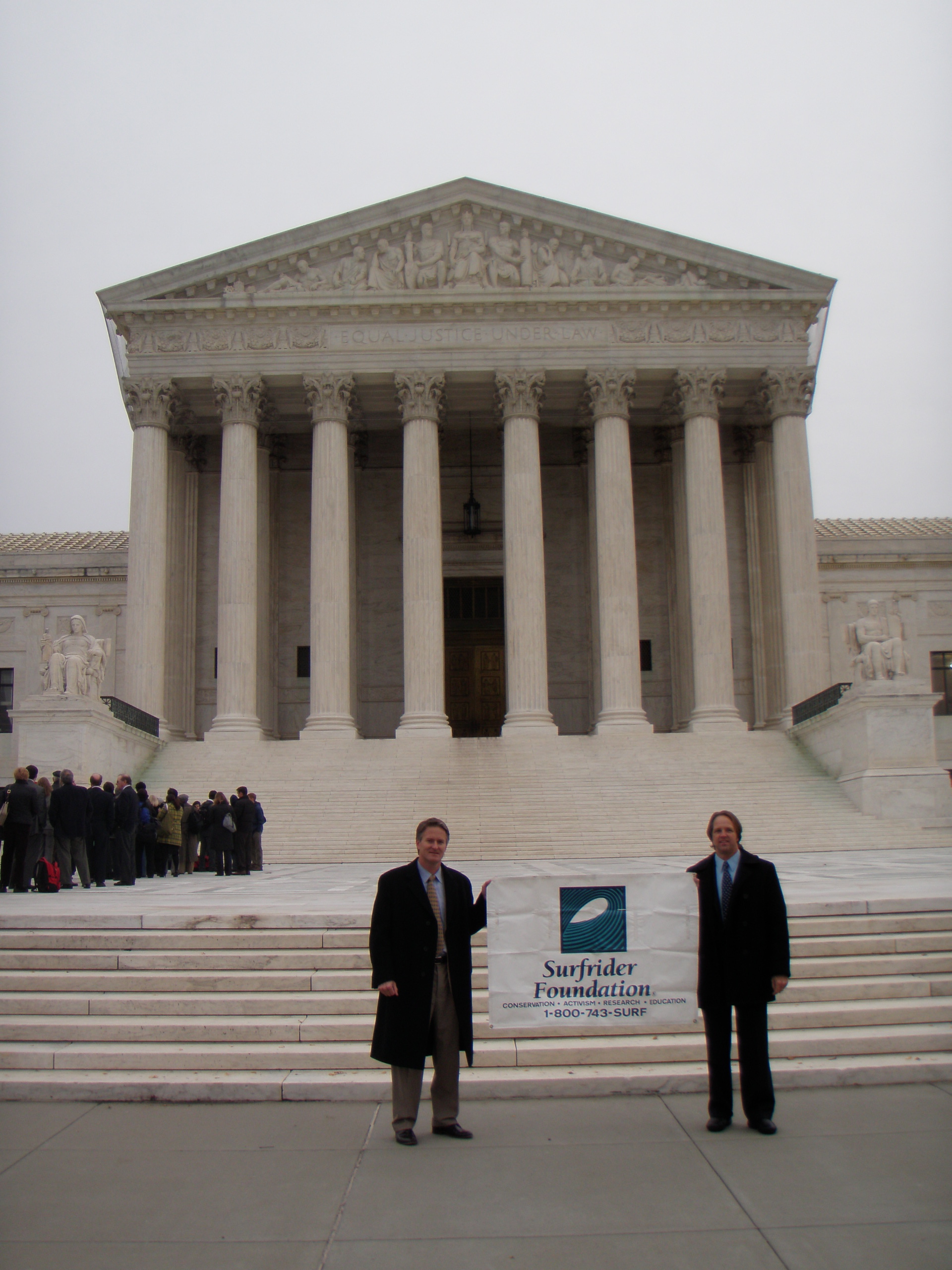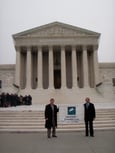

As many of you are aware, our chapter recently filed an Amicus Brief with the US Supreme Court. The larger issue at hand involves Emerald Coast beaches and issues regarding who (private individuals or public trust) owns specific portions of the beach and any associated rights pertaining. On behalf of Surfrider, I traveled to Washington D.C. last week and was present for the oral argument. This was my first encounter with our nations highest court and even aside from the personal importance of the case, I was quite impressed with the experience and thankful for the opportunity.
I am not an attorney, so you may want to visit scotusblog for what I believe is a fairly accurate description of the legal arguments made.
In simple terms, the state asserts that it has always owned the seashore and nearshore waters. The homeowners assert that if the state creates additional beach in front of their properties then this new land is theirs and if they are not paid for it, this would constitute a taking of their property or rights. Most importantly it seemed to the Supreme Court, was whether a taking had been instituted by the FL supreme courts earlier decision.
It appeared to me that the issue of taking property was agreed by the justices to be moot as it is evident that the property owners never owned the property in question (to which their own attorney conceded after being asked curtly several times).
This left to be addressed if any rights were taken. The justices seemed to agree that the rights already associated with ownership are well protected by the DEP agreement. They still own what they owned previous to the fill project, they still have the right to use the beach and the right to access the water.
What was largely undetermined was regarding an ambiguous, perhaps new, right asserted by the homeowners. They assert some right to retain "beach front" realty designation vs. "beachview" designation. They presented no evidence or precedent for this actually changing as a result of similar projects. And, they conceded that the DEP agreement specifically prohibits any permanent structures (which might block their water access or view) from being built on the new sand areas. They also conceded that the water areas are already available for state or civic allowable recreation and vending uses.
So, it appears that what they are most opposed to is you and I. If the state enlarges the sandy beach, then the public may have greater access to the beach. They appear to be opposed to increased access to the beaches near their properties.
This appears to be largely financially motivated, perhaps a money grab opportunity to be paid off by the state. However the justices did discuss the possibility that the property owners may have already been rewarded handsomely with the benefits of increased storm protection.
Since there is no constitutional right to be shielded from other people enjoying the beach and since it is difficult to understand what if anything has been "taken" from these people, we may be safe on the beaches for now. Interestingly enough, the outcome of this case could go either way and still present some degree of victory for our goal of preserving beach access. I believe it all depends upon exactly how the decision reads. From hearing the justices speak, it seems they have already made some affirmation of the state (and hence public) ownership of the beaches. Certainly it has already been a good exercise in bringing beach access issues to the attention of our Supreme Court Justices.
Check back for updates...
Mike Sturdivant
